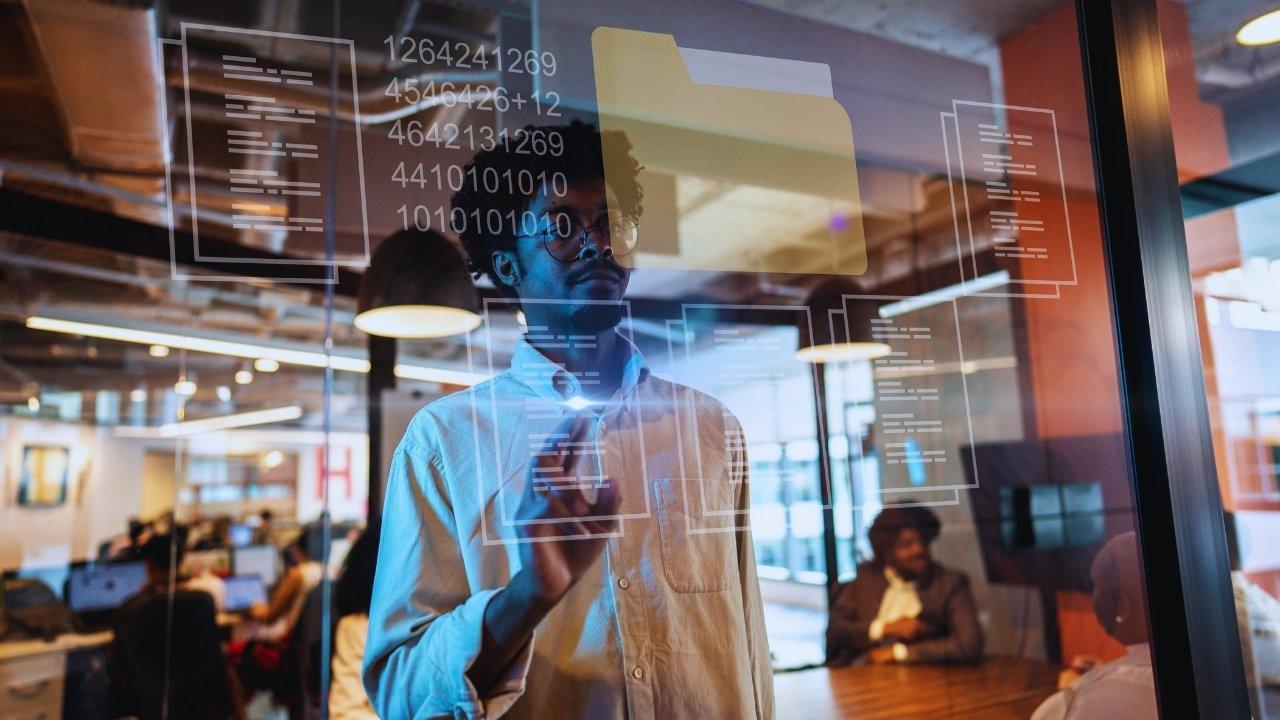
Join 10k+ people to get notified about new posts, news and tips.
Do not worry we don't spam!

Post by : Anis Farhan
In the last decade, science and technology have taken unprecedented steps toward merging human biology with digital systems. What was once the domain of fantasy—cyborgs, neural links, and robotic limbs—is now at the core of real-world innovation. Human-augmentation technology, a field that aims to enhance physical and cognitive abilities, is advancing rapidly. Driven by breakthroughs in artificial intelligence, robotics, biotechnology, and neuroscience, it’s redefining the boundaries of human capability.
Whether it’s restoring mobility through powered exoskeletons or unlocking direct brain-to-computer communication, the race to enhance human potential is well underway. Governments, tech giants, and research institutions across the globe are investing billions in developing technologies that not only repair but also upgrade the human body.
Human-augmentation refers to technologies designed to improve or supplement human abilities. It includes wearable devices that boost strength, implants that enhance sensory perception, and neural interfaces that link the human brain directly with machines. The concept is not new; prosthetics have existed for centuries. What’s changed is the sophistication and intent—moving from restoration to enhancement.
Modern augmentation can be categorized into three broad types:
Physical augmentation – Exoskeletons and prosthetics that increase strength or mobility.
Sensory augmentation – Implants or devices that enhance or restore senses, such as vision or hearing.
Cognitive augmentation – Brain-computer interfaces (BCIs) that expand mental capacity or connect directly with digital systems.
Together, these innovations blur the lines between biological and artificial intelligence.
Once seen only in military research, exoskeletons have entered the mainstream. These wearable robotic frameworks support and amplify human movement. In rehabilitation centers, powered exoskeletons help patients with spinal injuries walk again. For industrial workers, lightweight exosuits reduce strain, allowing them to lift heavy objects safely for long hours.
Companies like Sarcos Robotics, Cyberdyne, and Ekso Bionics are at the forefront, creating exoskeletons that combine sensors, AI, and hydraulics to adapt naturally to human motion. Beyond healthcare and industry, military organizations are testing advanced exosuits that could one day give soldiers increased endurance and protection in the field.
The implications extend far beyond physical labor—these systems could help aging populations remain active longer and reduce the risk of workplace injuries across sectors.
Arguably the most transformative area of human augmentation is the Brain–Computer Interface (BCI). BCIs create a direct communication channel between the human brain and external devices. By decoding neural activity, they can allow people to control machines, computers, or prosthetic limbs using only thought.
Elon Musk’s Neuralink, along with companies like Synchron and Blackrock Neurotech, are leading this revolution. Early trials have already allowed paralyzed individuals to move cursors, operate robotic arms, and even type messages purely by thinking.
Beyond medical use, BCIs could eventually enhance memory, concentration, and information processing. Imagine uploading knowledge directly into your brain or operating complex systems without physical input—these ideas are no longer fiction but emerging possibilities.
Augmentation isn’t limited to muscles and brains—it’s also transforming perception. Researchers are developing implants that restore or enhance sight for the visually impaired and hearing for those with auditory loss. But progress doesn’t stop there. Experiments are underway on expanded sensory ranges—allowing humans to perceive infrared light, detect magnetic fields, or even sense environmental changes in real time.
Projects like Second Sight’s Argus II or Cochlear’s neural implants are examples of sensory restoration leading to enhancement. The next generation of these technologies may let humans perceive far more than evolution intended.
With great innovation comes deep ethical debate. As human-augmentation technology advances, questions arise: Who gets access? Should enhancement be limited to medical necessity, or open to all? Could it deepen social inequality, where only the wealthy can afford superior physical or mental abilities?
Bioethicists warn that without regulation, augmentation could create a “cyber elite.” Governments and scientific bodies are now drafting frameworks to govern the ethical use of augmentation tech. Privacy is another concern—especially in brain interfaces where neural data could be vulnerable to misuse.
Balancing innovation with morality will be one of humanity’s greatest challenges in the coming decades.
AI acts as the driving force behind modern augmentation. It interprets data from sensors, predicts movement patterns, and even decodes brain signals. In exoskeletons, AI ensures smooth coordination between machine and body. In BCIs, it filters noise from neural activity to translate intention into action.
The fusion of AI with biotechnology is what makes these systems “smart.” It allows machines to learn from human behavior and adapt to each individual’s body and mind. This symbiosis is redefining the way humans and technology coexist—transforming augmentation into an intelligent extension of ourselves.
Human augmentation began as a way to restore lost function, and in medicine, it’s already delivering miracles. Robotic prosthetics powered by neural signals allow amputees to regain dexterous movement. Brain implants help patients with Parkinson’s disease regain motor control. Meanwhile, AI-driven exoskeletons enable stroke survivors to relearn how to walk through assisted therapy.
For healthcare, augmentation isn’t just a gadget—it’s a revolution in recovery. It offers hope to millions with mobility, neurological, or sensory impairments, turning impossibilities into achievable realities.
Outside healthcare, human augmentation is shaping the future of work. In manufacturing, logistics, and defense, exoskeletons reduce fatigue and improve safety. Brain interfaces could eventually let workers control complex machinery through mental commands, boosting precision and reducing errors.
Analysts predict that the global human-augmentation market could surpass $400 billion by 2035. This will create entirely new industries centered around wearable robotics, neural tech, and cognitive enhancement services. As automation evolves, augmentation may become humanity’s way of keeping up—enhancing human efficiency in an age dominated by machines.
The ultimate goal of human-augmentation isn’t to replace humanity—it’s to redefine it. By merging biology with technology, scientists aim to unlock latent potential and extend our capabilities beyond natural limits. While some fear a dystopian outcome, others see a world where technology amplifies empathy, understanding, and human resilience.
In the near future, augmented individuals may walk among us—stronger, smarter, and more perceptive. Whether they are factory workers, soldiers, surgeons, or ordinary citizens, one thing is certain: human-augmentation will change what it means to be human itself.
Despite progress, hurdles remain. The cost of development is high, and regulatory frameworks are still catching up. Safety testing for neural implants and wearable robotics must meet strict standards before widespread adoption. Public acceptance is another factor—societies must adapt to a world where the line between human and machine is increasingly blurred.
Still, the momentum is unstoppable. The fusion of AI, biotechnology, and robotics is pushing human evolution in a new direction. What began as assistive technology is fast becoming an evolutionary leap.
Human-augmentation technology embodies both the promise and peril of modern innovation. It challenges the essence of identity while expanding the definition of ability. As science marches forward, humanity stands on the brink of transformation—one that could redefine our evolution forever.
The next few decades will decide whether augmentation becomes a tool for collective progress or a symbol of division. But one thing remains clear: the era of enhanced humans has already begun.
This article is for informational purposes only. It does not promote or endorse any specific technology, product, or company. The information presented is based on emerging research and technological trends and may evolve as developments occur.










Muhammad Hamza Raja Wins IFBB Pro Card Puts Pakistan & UAE on Global Stage
Pakistani bodybuilder Muhammad Hamza Raja earns IFBB Pro Card in Czech Republic, showcasing Dubai’s

Shreyas Iyer’s Recovery Underway After Spleen Laceration in Sydney ODI
Shreyas Iyer is recovering after a spleen laceration sustained while taking a catch in the Sydney OD

Qatar Ready to Host FIFA U-17 World Cup 2025 in Aspire
Qatar confirms full readiness to host the FIFA U-17 World Cup 2025 from November 3–27, with world-cl

Wolvaardt’s 169 Sends South Africa Into Women’s World Cup Final
Laura Wolvaardt’s 169 powered South Africa to a 125-run semi-final win over England, booking a place

Vacherot Beats Cousin Rinderknech to Reach Paris Masters Last 16
Valentin Vacherot overcame cousin Arthur Rinderknech in three sets to secure a place in the Paris Ma

Fernandez Reaches Hong Kong Tennis Open Quarterfinals
Leylah Fernandez moved into the Hong Kong Tennis Open quarterfinals with a straight-sets win, as maj